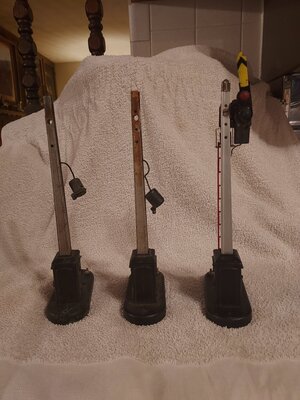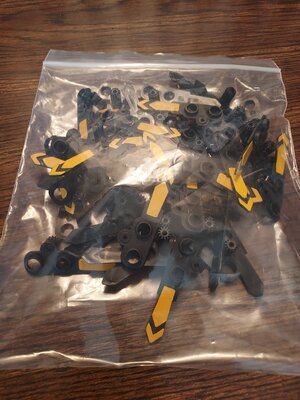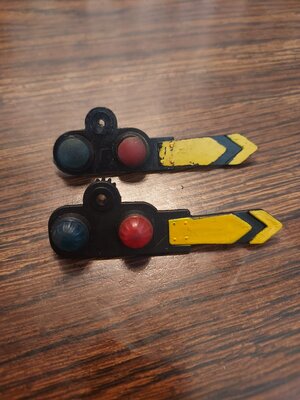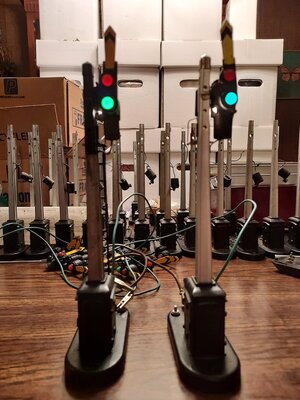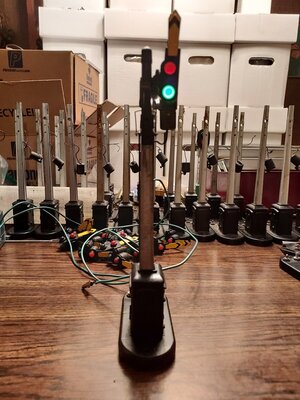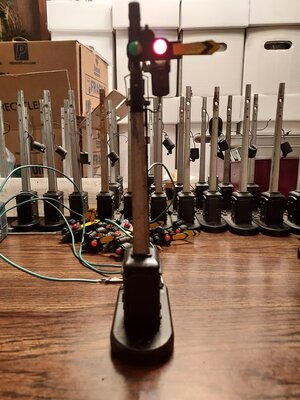Railroad Pony
Member
Something I noticed as a kid was that most of the accessories for Lionel trains were WAY overscale. It occured to me they looked more like G scale items. Many started out as standard gauge accessories. The 151 semaphore signal is one of them. I bought one and started doing a little investigating. Turns out that they are a very close fit to G scale.
I ended up buying several lots of them on ePay. I'm the proud owner of 32 of them. That makes 16 signal locations. They are in all different states of disrepair. First order of business was disassembly and inspection. Oh, I should mention I am a retired railroad signal maintainer. Can't get away from it. Sorting and taking an inventory was next. I've repaired all that I can salvage, tested all the solenoids, and just ordered replacement parts. Cheaper in bulk it seems. Now, I'm waiting for the parts to arrive so I can get the assembly line started.


I ended up buying several lots of them on ePay. I'm the proud owner of 32 of them. That makes 16 signal locations. They are in all different states of disrepair. First order of business was disassembly and inspection. Oh, I should mention I am a retired railroad signal maintainer. Can't get away from it. Sorting and taking an inventory was next. I've repaired all that I can salvage, tested all the solenoids, and just ordered replacement parts. Cheaper in bulk it seems. Now, I'm waiting for the parts to arrive so I can get the assembly line started.

